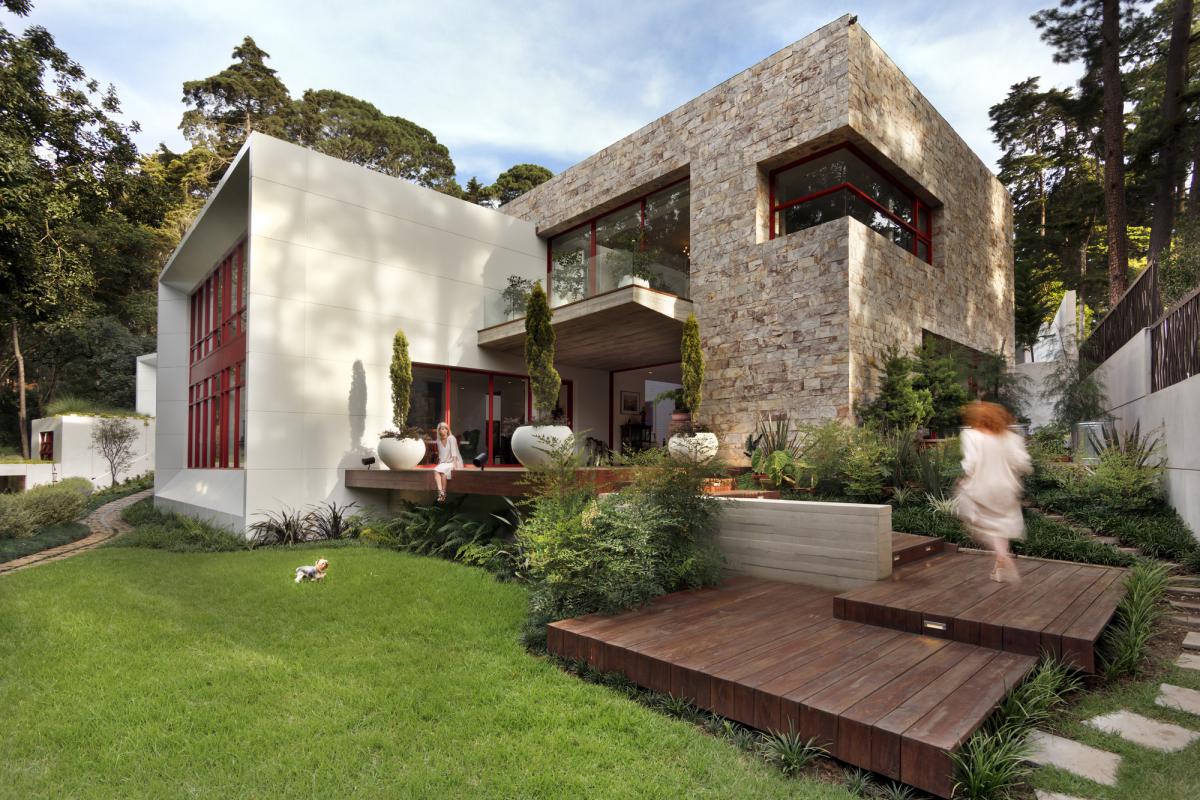
Located in a privileged area, surrounded by woods yet close to Guatemala city, Chinkara house is presented as a dual housing, which explores the contrast between nature and man-made; the primitive and the modern.
The house is imagined as a rock located on the ground, an ethereal element organized from the contours of the site. It contains an art gallery, an intimate contemplation space, a container of experiences embodied in the various works of art that make it up. This rock volume is sculpted in a way that allows overhead lighting and views from the different environments to the natural landscape.
 This stone volume serves as the heart of the building, around which the different rooms of the house adhere, penetrate, or overlap, each contained within different white volumes wrapped in ACM, an artificial material, which opposed to the stone symbolizes the intervention of man in the natural setting of the project. As a result, the residence reads like a harmonious composition between soil, stone and man.
This stone volume serves as the heart of the building, around which the different rooms of the house adhere, penetrate, or overlap, each contained within different white volumes wrapped in ACM, an artificial material, which opposed to the stone symbolizes the intervention of man in the natural setting of the project. As a result, the residence reads like a harmonious composition between soil, stone and man.
Even when the house can be read as a mass composition of volumes, inside, each room retains a residential, intimate, human scale. The warmth of wood on the floor, the rustic stone, the height of the rooms and their ornamentation reinforce the idea of the good life, constantly inviting residents to contemplation and intimacy.
This introverted notion of the project is contrasted with the experience of the house to the landscape. Except for the art gallery, each of the rooms that make up the house is contained in a defined volume, which opens outward, integrating the richness of nature with the experiences contained within the house. Large windows in bright red, which are embedded in the volumes that make up the building, denote this intention to frame the landscape from within.

Outside, the house reads as a set of windows that expose its interior spaces, as well as the experiences of its inhabitants day to day; inside, all activities of the residents are ornamented by a natural background, consisting of different species of trees, animals and sounds from outside.

Ultimately, Chinkara House is more than a home, it is an intermediary between the natural and the artificial; the intimate and the external; the massive and impressive, with the residential and everyday. ![]()

